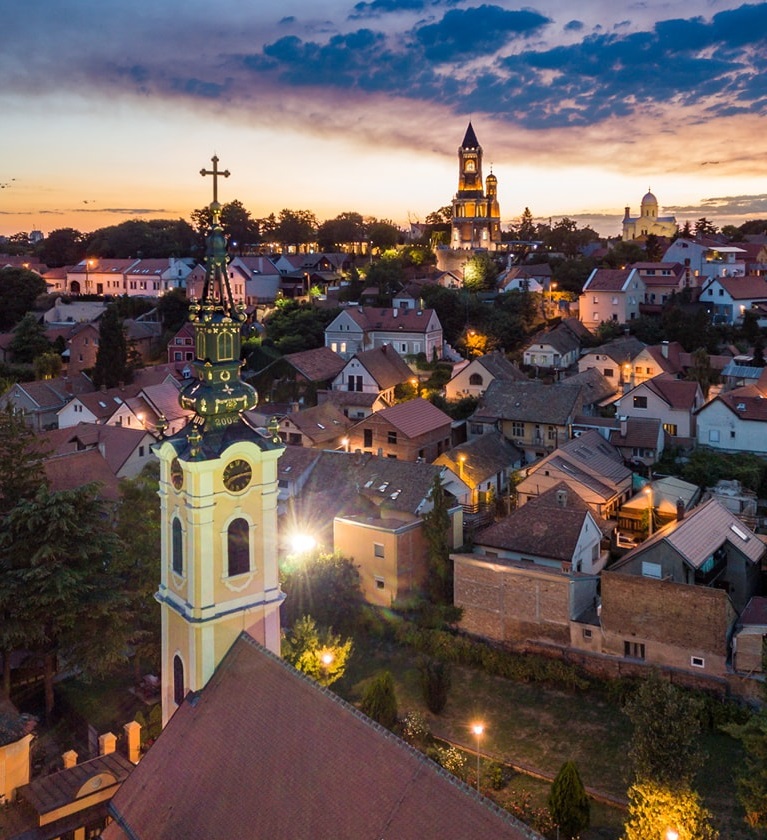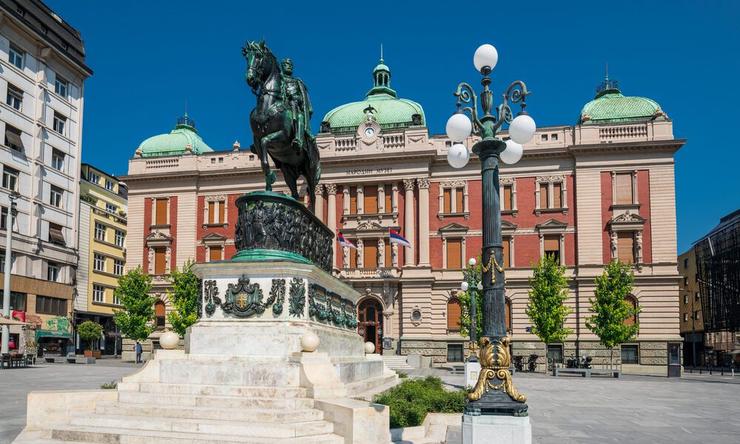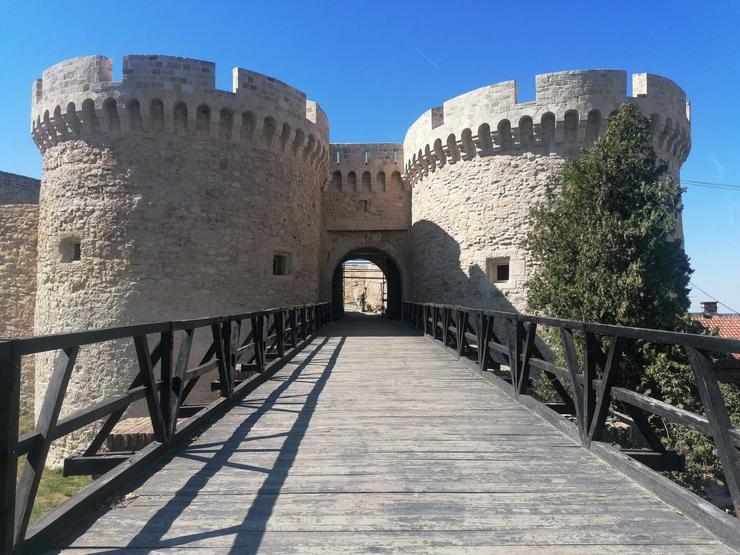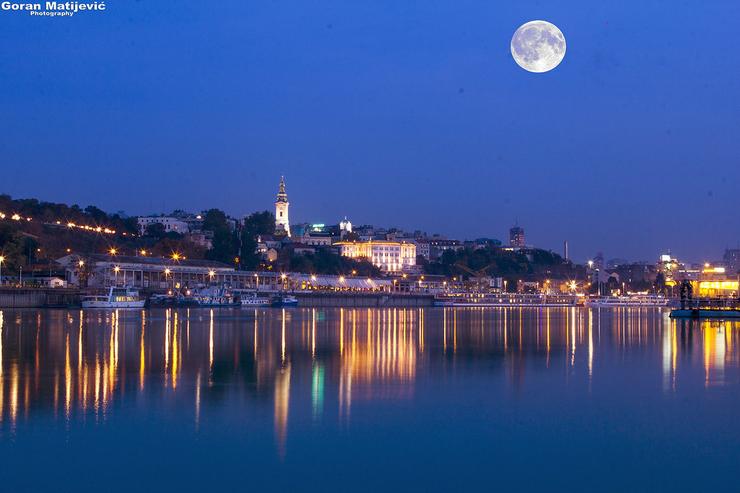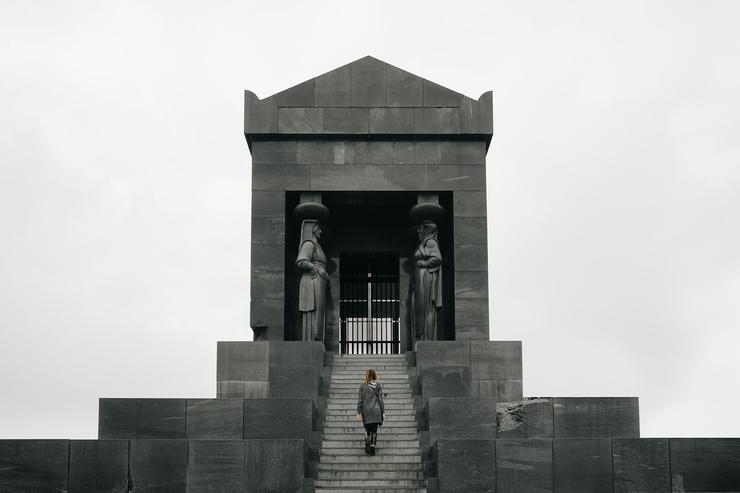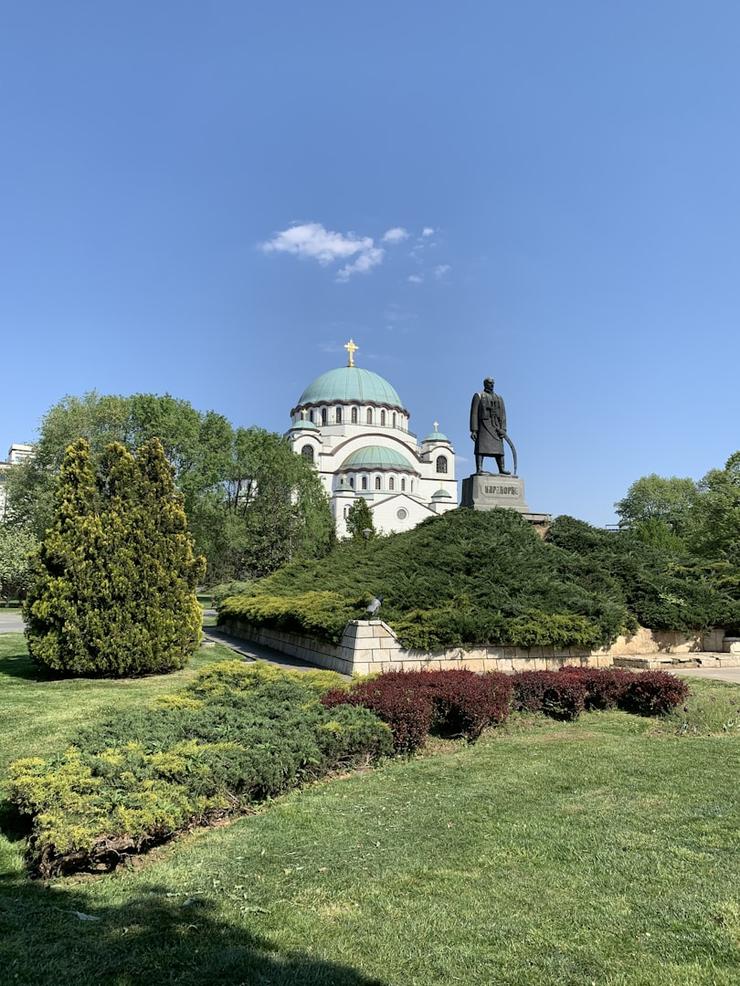About Belgrade
A few words about lovely Belgrade
Serbia’s capital, Belgrade, is one of Europe’s oldest cities. Ruins of a Neolithic settlement have been unearthed nearby, while the first settlement on the site of the modern city was the Celtic town of Singidunum, which was built here in the 3rd Century BCE. The city changed hands with the arrival of Romans in the 1st Century, only to be conquered by Slavs in the 6th Century. Throughout history many nations have fought over it – Hungarians, Ottoman Turks, Austrians – resulting in the city being razed to the ground and rebuilt as many as 38 times throughout its history. In 1841, Belgrade became the capital city of Serbia.
Chipped stone tools found in Zemun show that the area around Belgrade was inhabited by nomadic foragers in the Palaeolithic and Mesolithic eras. Some of these tools are of Mousterian industry—belonging to Neanderthals rather than modern humans. Aurignacian and Gravettian tools have also been discovered near the area, indicating some settlement between 50,000 and 20,000 years ago. There are several Starčevo sites in and around Belgrade, including the eponymous site of Starčevo. The Starčevo culture was succeeded by the Vinča culture (5500–4500 BC), a more sophisticated farming culture that grew out of the earlier Starčevo settlements and also named for a site in the Belgrade region (Vinča-Belo Brdo). The Vinča culture is known for its very large settlements, one of the earliest settlements by continuous habitation and some of the largest in prehistoric Europe.
Belgrade is the capital of Serbian culture, education and science. It has the greatest concentration of institutions of national importance in the field of science and art. There is the Serbian Academy of Sciences and Arts, established in 1886 as the Serbian Royal Academy: the National Library of Serbia, established in 1832; the National Museum, established in 1841 and the National Theatre, established in 1869. The city is also the seat of the Belgrade University, founded in 1808 as the Great School, and the seat of the University of Art.
Belgrade is the capital of Serbia, having around 1,6 million residents. In the field of traffic and transport, it is a city of the highest importance as a road and railway center, as a port for river and air traffic, and as a telecommunication center.
High above the Sava and Danube confluence, on the rocky ridge which opens the view of Novi Beograd, Zemun and wide plains of Pannonia, there is the Belgrade Fortress Kalemegdan, the former historical and urban center of Belgrade. This spatial complex consists of: The Fortress, divided into Upper Town and Lower Town, and the Kalemegdan park, the most popular promenade for Belgrade citizens.
Those who crave a good time on a night out are sure to find it at one of Belgrade’s many night clubs with trendy music and top-notch entertainment, or at the traditional coffee houses with live music and songs whose lyrics you may not understand, but which will prove entertaining. Its internationally famous nightlife has earned Belgrade the reputation of a city that never sleeps!
Kalemegdan is the most beautiful and biggest park in Belgrade, which is also the most important cultural and historical complex, in which the Belgrade Fortress stands high above the Sava and Danube confluence. The name Kalemegdan applies only to the spacious plateau surrounding the Fortress, which was turned into a park in the eighties of the XIX century. When the Fortress served as Belgrade's chief military stronghold, the plateau was a place from which the enemy was kept under observation and where preparations were made for combats. Its name derives from the Turkish words kale (fort) and megdan (field) Kalemegdan. The park now includes the Military Museum, Cvijeta Zuzorić Art Pavilion, City Institute for Protection of Cultural Monuments, Zoo, a children's amusement park, a large number of sports fields, restaurants and so on.
Additional important sights in Belgrade are the Temple of Saint Sava, National Museum, the National Theathre, the Palace of the Assembly of Serbia, Avala mountain and the Monument to the Unknown Hero, the White Palace, "?" Café, Konak Kneza Milosa, Konak Kneginje Ljubice, Kapetan-Misino Zdanje, Pobednik monument, etc.
The Nikola Tesla Museum represents one the most popular tourist attraction in Belgrade, one of the 'must see' things in Belgrade. It is dedicated to honoring and displaying the life and work of Nikola Tesla as well as the final resting place for Tesla. It holds more than 160,000 original documents, over 2,000 books and journals, over 1,200 historical technical exhibits, over 1,500 photographs and photo plates of original, technical objects, instruments and apparatus, and over 1,000 plans and drawings. Very little is on display in the small ground floor exhibition space. The Nikola Tesla Archive was inscribed on UNESCO's Memory of the World Programme Register in 2003 due to its critical role regarding history of electrification of the world and future technological advancements in this area.
Grandiose coffee houses, quirky sidewalk ice-creameries and smoky dens all find a rightful place along Knez Mihailova, a lively pedestrian boulevard flanked by historical buildings all the way to the ancient Kalemegdan Citadel, the crown of the city. The old riverside Savamala quarter has gone from ruin to resurrection, and is the city’s creative headquarters. Deeper in Belgrade’s bowels are museums guarding the cultural, religious and military heritage of the country.
